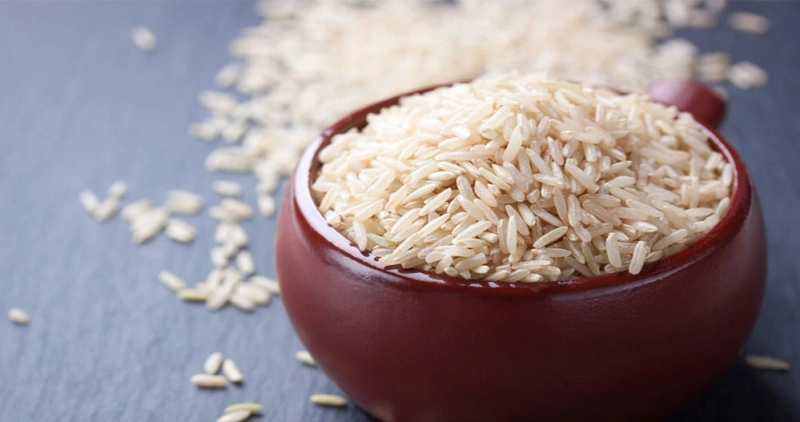Rice is a staple food for billions of people worldwide, with a vast array of varieties to choose from. Among them, Basmati rice stands out, not just for its distinct aroma and long, slender grains, but also for its health benefits. In this blog, we\'ll delve into what sets Basmati rice apart from other types of rice and why it might be the healthier choice for you.
What is Basmati Rice?
Basmati rice is a type of long-grain rice traditionally grown in the Indian subcontinent. It is renowned for its unique fragrance and flavor, which is often described as nutty and floral. The word "Basmati" itself means "fragrant" in Hindi, reflecting its distinctive aromatic qualities.
Nutritional Profile of Basmati Rice
One of the primary reasons Basmati rice is considered healthier lies in its nutritional profile. Here’s a closer look:
Low Glycemic Index (GI): Basmati rice has a lower glycemic index compared to other rice varieties. Foods with a low GI are digested and absorbed more slowly, causing a gradual rise in blood sugar levels. This makes Basmati rice a better option for people with diabetes and those aiming to maintain steady energy levels.
Fewer Calories: Basmati rice tends to have fewer calories per serving compared to many other types of rice, making it a favorable option for weight management.
Rich in Fiber: Basmati rice, especially the brown variety, is high in dietary fiber. This aids in digestion, helps maintain bowel health, and can assist in weight loss efforts by promoting a feeling of fullness.
Essential Nutrients: Basmati rice is a good source of essential nutrients like B vitamins (especially B1 and B6), which are crucial for energy metabolism, brain function, and overall cellular health.
Comparison with Other Rice Varieties
To understand why Basmati rice might be the healthier option, it’s essential to compare it with other popular rice varieties:
White Rice
- Glycemic Index: White rice generally has a high GI, leading to quicker spikes in blood sugar levels.
- Nutritional Content: The milling process removes the bran and germ, stripping white rice of fiber and many essential nutrients.
- Caloric Content: White rice often has higher calorie content per serving.
Brown Rice
- Glycemic Index: Brown rice has a moderate GI, which is higher than Basmati but lower than white rice.
- Nutritional Content: Brown rice retains its bran and germ, making it richer in fiber, vitamins, and minerals.
- Caloric Content: Brown rice is comparable in calorie content to Basmati rice but can be slightly higher.
Jasmine Rice
- Glycemic Index: Jasmine rice has a high GI, similar to white rice, causing rapid increases in blood sugar levels.
- Nutritional Content: Like white rice, Jasmine rice is often milled and polished, reducing its fiber and nutrient content.
- Caloric Content: Jasmine rice is similar in calorie content to white rice, generally higher than Basmati.
Health Benefits of Choosing Basmati Rice
Blood Sugar Management: The low GI of Basmati rice makes it an excellent choice for those managing diabetes or trying to prevent blood sugar spikes.
Weight Management: With fewer calories and higher fiber content, Basmati rice can help with weight loss and maintenance by keeping you fuller for longer and reducing overall calorie intake.
Digestive Health: The fiber in Basmati rice aids in healthy digestion and can help prevent constipation.
Heart Health: Basmati rice, particularly the whole grain variety, contains nutrients that support cardiovascular health, such as magnesium and potassium.
How to Incorporate Basmati Rice into Your Diet
Incorporating Basmati rice into your diet is simple and versatile. It pairs well with a variety of dishes, from curries and stir-fries to salads and pilafs. Here are a few tips:
- Pair with Vegetables: Create a balanced meal by combining Basmati rice with a generous portion of vegetables.
- Use in Salads: Cooked and cooled Basmati rice can be a great addition to salads for a hearty, satisfying meal.
- Flavorful Pilafs: Enhance the nutty flavor of Basmati rice by cooking it with spices like cumin, cardamom, and bay leaves.
Conclusion
Basmati rice’s unique qualities and health benefits make it a standout choice among rice varieties. Its lower glycemic index, fewer calories, and rich nutrient profile offer compelling reasons to consider it as a healthier option. Whether you’re managing your weight, controlling blood sugar levels, or simply looking for a nutritious addition to your meals, Basmati rice is a delicious and beneficial choice.



